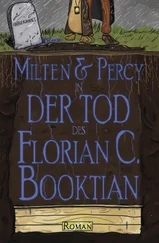Florian Cajori - William Oughtred
Здесь есть возможность читать онлайн «Florian Cajori - William Oughtred» — ознакомительный отрывок электронной книги совершенно бесплатно, а после прочтения отрывка купить полную версию. В некоторых случаях можно слушать аудио, скачать через торрент в формате fb2 и присутствует краткое содержание. Жанр: foreign_antique, foreign_prose, на английском языке. Описание произведения, (предисловие) а так же отзывы посетителей доступны на портале библиотеки ЛибКат.
- Название:William Oughtred
- Автор:
- Жанр:
- Год:неизвестен
- ISBN:нет данных
- Рейтинг книги:4 / 5. Голосов: 1
-
Избранное:Добавить в избранное
- Отзывы:
-
Ваша оценка:
- 80
- 1
- 2
- 3
- 4
- 5
William Oughtred: краткое содержание, описание и аннотация
Предлагаем к чтению аннотацию, описание, краткое содержание или предисловие (зависит от того, что написал сам автор книги «William Oughtred»). Если вы не нашли необходимую информацию о книге — напишите в комментариях, мы постараемся отыскать её.
William Oughtred — читать онлайн ознакомительный отрывок
Ниже представлен текст книги, разбитый по страницам. Система сохранения места последней прочитанной страницы, позволяет с удобством читать онлайн бесплатно книгу «William Oughtred», без необходимости каждый раз заново искать на чём Вы остановились. Поставьте закладку, и сможете в любой момент перейти на страницу, на которой закончили чтение.
Интервал:
Закладка:
The characteristic in the Clavis that is most striking to a modern reader is the total absence of indexes or exponents. There is much discussion in the leading treatises of the latter part of the sixteenth and the early part of the seventeenth century on the theory of indexes, but the modern exponential notation, aⁿ , is of later date. The modern notation, for positive integral exponents, first appears in Descartes’ Géométrie , 1637; fractional and negative exponents were first used in the modern form by Sir Isaac Newton, in his announcement of the binomial formula, in a letter written in 1676. This total absence of our modern exponential notation in Oughtred’s Clavis gives it a strange aspect. Like Vieta, Oughtred uses ordinarily the capital letters, A , B , C … to designate given numbers; A ² is written Aq , A ³ is written Ac ; for A ⁴, A ⁵, A ⁶ he has, respectively, Aqq , Aqc , Acc . Only on rare occasions, usually when some parallelism in notation is aimed at, does he use small letters 27to represent numbers or magnitudes. Powers of binomials or polynomials are marked by prefixing the capital letters Q (for square), C (for cube), QQ (for the fourth power), QC (for the fifth power), etc.
Oughtred does not express aggregation by (). Parentheses had been used by Girard, and by Clavius as early as 1609, 28but did not come into general use in mathematical language until the time of Leibniz and the Bernoullis. Oughtred indicates aggregation by writing a colon (:) at both ends. Thus, Q : A - E : means with him ( A - E )². Similarly, √ q : A + E : means √( A + E ). The two dots at the end are frequently omitted when the part affected includes all the terms of the polynomial to the end. Thus, C : A + B - E =.. means ( A + B - E )³=.. There are still further departures from this notation, but they occur so seldom that we incline to the interpretation that they are simply printer’s errors. For proportion Oughtred uses the symbol (::). The proportion a : b = c : d appears in his notation a · b :: c · d . Apparently, a proportion was not fully recognized in this day as being the expression of an equality of ratios. That probably explains why he did not use = here as in the notation of ordinary equations. Yet Oughtred must have been very close to the interpretation of a proportion as an equality; for he says in his Elementi decimi Euclidis declaratio
Конец ознакомительного фрагмента.
Текст предоставлен ООО «ЛитРес».
Прочитайте эту книгу целиком, купив полную легальную версию на ЛитРес.
Безопасно оплатить книгу можно банковской картой Visa, MasterCard, Maestro, со счета мобильного телефона, с платежного терминала, в салоне МТС или Связной, через PayPal, WebMoney, Яндекс.Деньги, QIWI Кошелек, бонусными картами или другим удобным Вам способом.
1
Aubrey’s Brief Lives , ed. A. Clark, Vol. II, Oxford, 1898, p. 106.
2
“To the English Gentrie, and all others studious of the Mathematicks, which shall bee Readers hereof. The just Apologie of Wil: Ovghtred, against the slaunderous insimulations of Richard Delamain, in a Pamphlet called Grammelogia , or the Mathematicall Ring, or Mirifica logarithmorum projectio circularis ” [1633?], p. 8. Hereafter we shall refer to this pamphlet as the Apologeticall Epistle , this name appearing on the page-headings.
3
Companion to the [British] Almanac of 1837 , p. 28, in an article by Augustus De Morgan on “Notices of English Mathematical and Astronomical Writers between the Norman Conquest and the Year 1600.”
4
New and General Biographical Dictionary (John Nichols), London, 1784, art. “Oughtred.”
5
Rev. Owen Manning, History of Antiquities in Surrey , Vol. II, p. 132.
6
Skeleton Collegii Regalis Cantab.: Or A Catalogue of All the Provosts, Fellows and Scholars, of the King’s College.. since the Foundation Thereof , Vol. II, “William Oughtred.”
7
Aubrey, op. cit. , Vol. II, p. 107.
8
Rigaud, Correspondence of Scientific Men of the Seventeenth Century , Oxford, Vol. I, 1841, p. 5.
9
Aubrey, op. cit. , Vol. II, p. 110.
10
Ibid. , p. 111.
11
Op. cit. , Vol. II, p. 132.
12
Mr. William Lilly’s History of His Life and Times, From the Year 1602 to 1681 , London, 1715, p. 58.
13
Rigaud, op. cit. , Vol. I, p. 60.
14
Aubrey, op. cit. , Vol. II, p. 107.
15
Rigaud, op. cit. , Vol. I, p. 16.
16
Owen Manning, op. cit. , p. 132.
17
New and General Biographical Dictionary (John Nichols), London, 1784, art. “Oughtred.”
18
Op. cit. , Vol. II, p. 110.
19
Rev. Owen Manning, The History and Antiquities of Surrey , Vol. II, London, 1809, p. 132.
20
Op. cit. , Vol. II, 1898, p. 111.
21
Budget of Paradoxes , London, 1872, p. 451; 2d ed., Chicago and London, 1915, Vol. II, p. 303.
22
The full title of the Clavis of 1631 is as follows: Arithmeticae in numeris et speciebvs institvtio: Qvae tvm logisticae, tvm analyticae, atqve adeo totivs mathematicae, qvasi clavis est. – Ad nobilissimvm spectatissimumque invenem Dn. Gvilelmvm Howard, Ordinis qui dicitur, Balnei Equitem, honoratissimi Dn. Thomae, Comitis Arvndeliae & Svrriae, Comitis Mareschalli Angliae, &c filium. – Londini, Apud Thomam Harpervm. M.DC.XXXI.
In all there appeared five Latin editions, the second in 1648 at London, the third in 1652 at Oxford, the fourth in 1667 at Oxford, the fifth in 1693 and 1698 at Oxford. There were two independent English editions: the first in 1647 at London, translated in greater part by Robert Wood of Lincoln College, Oxford, as is stated in the preface to the 1652 Latin edition; the second in 1694 and 1702 is a new translation, the preface being written and the book recommended by the astronomer Edmund Halley. The 1694 and 1702 impressions labored under the defect of many sense-disturbing errors due to careless reading of the proofs. All the editions of the Clavis , after the first edition, had one or more of the following tracts added on:
Eq. = De Aequationum affectarvm resolvtione in numeris.
Eu. = Elementi decimi Euclidis declaratio.
So. = De Solidis regularibus, tractatus.
Читать дальшеИнтервал:
Закладка:
Похожие книги на «William Oughtred»
Представляем Вашему вниманию похожие книги на «William Oughtred» списком для выбора. Мы отобрали схожую по названию и смыслу литературу в надежде предоставить читателям больше вариантов отыскать новые, интересные, ещё непрочитанные произведения.
Обсуждение, отзывы о книге «William Oughtred» и просто собственные мнения читателей. Оставьте ваши комментарии, напишите, что Вы думаете о произведении, его смысле или главных героях. Укажите что конкретно понравилось, а что нет, и почему Вы так считаете.












